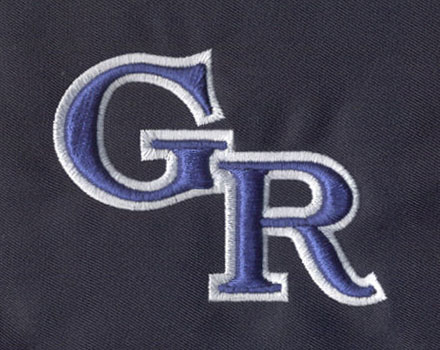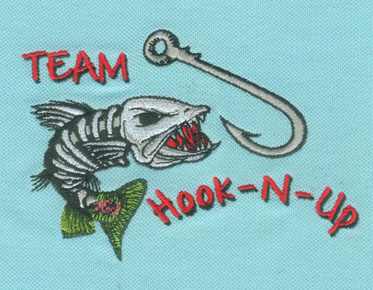Knowledge from Eagle digitizing: The History Behind Biker Patches
What
comes to your mind when you picture bikers or motorcycle clubs? You'll probably
visualize leather and denim with patches identifying an association with a
club. What distinguishes these groups from each other and from the world are
custom biker patches. Biker jackets are an essential part of the image, but
it's no secret that they cover up some pretty cool designs. So if you're
looking for something more than just your average motorcycle jacket, buy a
customized one! The following content also has some reference value for Eagle digitizing.
The history of motorcycle patches is interesting. Cyclists don't just wear colors for identification; They are very proud of it. The colors and patterns on the patch represent the name and values of the club members. Although codes dictate that cyclists wear patches on jackets or vests, some cycling groups also channel creativity and attach patches to accessories such as hats, headbands and keychains.
If you're considering making a locomotive patch or just want to learn more about its origins, here's a detailed history of the locomotive patch.
The
origin of the locomotive patch
Motorcycle patches were first introduced in the United States in the 1920s, when the American Motorcyclists Association (AMA) was founded. Cyclists participating in events organized by the AMA would embroider the name of their club on their vests and jackets, thus starting the trend of biker patches. These patches became their pride, honor and joy. But from now on, the history of motorcycle patches gets a lot more interesting.
1%
per center locomotive patch
In 1947, riots broke out at an AMA event in California. The cyclists involved caused mayhem and the riot got out of hand. Later, the AMA issued a press release saying that the cyclists who caused the riot were outlaws, representing only 1 percent of the cycling community, not 99 percent of law-abiding citizens.
The patch became even more important after this incident, as any cyclist who declared himself an outlaw wore a one percent patch. To this day, the 1% remains symbolic, even though the AMA has declared its existence and the stories associated with it a wild exaggeration.
Whether or not this is true, and any other tales of evil and rebellious cyclists, we can agree that the history of motorcycle patches is full of excitement.
Bikers,
patches and discrimination
Another interesting part of the bike patch history is that until the 1950s, AMA only accepted whites. Any club that accepts people of color will be labeled as an outlaw gang, in addition to those that don't keep the peace and should actually be abandoned.
In the 1950s, the rules changed only for whites. It would take another few decades, however, before a significant number of non-whites, particularly African Americans, felt comfortable joining bike clubs.
Types
and uses of locomotive patches
While some cycling clubs have only one type of patch - membership patches - others create patches for levels and achievements. When cyclists join the club, they must complete a certain number of missions and reach certain goals to earn patches. As they improve and earn the respect of other members, they also earn new patches.
Outlaw bike clubs traditionally have three different patches, and earning each requires members to complete tasks set by the club leader. Read a detailed guide to motorcycle patches here.
In short, the locomotive patch has a deeper meaning. Patches aren't just decorations; These patches represent a way of life. In some parts of the United States, wearing a scooter patch solely as an accessory is considered offensive. The clubs that originally created these patches don't like non-members to casually wear symbols rooted in their heritage, which helps them stand out in the world. If you are a fan of a motorcycle club, you should learn more about its rules before wearing its logo.
Years of motorcycle patch fashion
Motorcycle
patches and life lessons
What we can learn from the history of bike patches is that there is a way of life. Loyalty, camaraderie, tradition and duty, as well as a love of riding, are what these patches are all about.
Therefore,
if you want to wear a motorcycle patch as a fashion accessory, please respect
its meaning. Wear it with proper etiquette and know the history of the
motorcycle patch you are carrying.
While
once worn only by actual cyclists, many now adornit with cycling patches as a
means of displaying rebellion, strength, bravery and a unique sense of style.
In the history of locomotive patches, old symbols were often embroidered directly on jackets and vests. Today, you'll find embroidered and woven biker patches, a popular type of patch for biker jackets. Other types of motorcycle patches include leather, Chenille, and PVC patches, although the latter two are less common.
In addition to the name of the club, custom bike patches may also include membership levels, levels, achievements, and so on. Some biker patches may also include flags, political statements, amusing anecdotes, and meaningful information.
In
the history of motorcycle patches, these patches were usually only attached to
denim or leather jackets and vests. Over time, some cyclists may choose to add
patches to their jeans, T-shirts, headdresses, etc. Most cyclists wear patches
or patched clothing wherever they go, because belonging to a biker's club is
about living a certain lifestyle. According to the code of conduct followed by
the motorcycle club, you represent your values when you wear a patch, and you
would never do anything contrary to its meaning.



